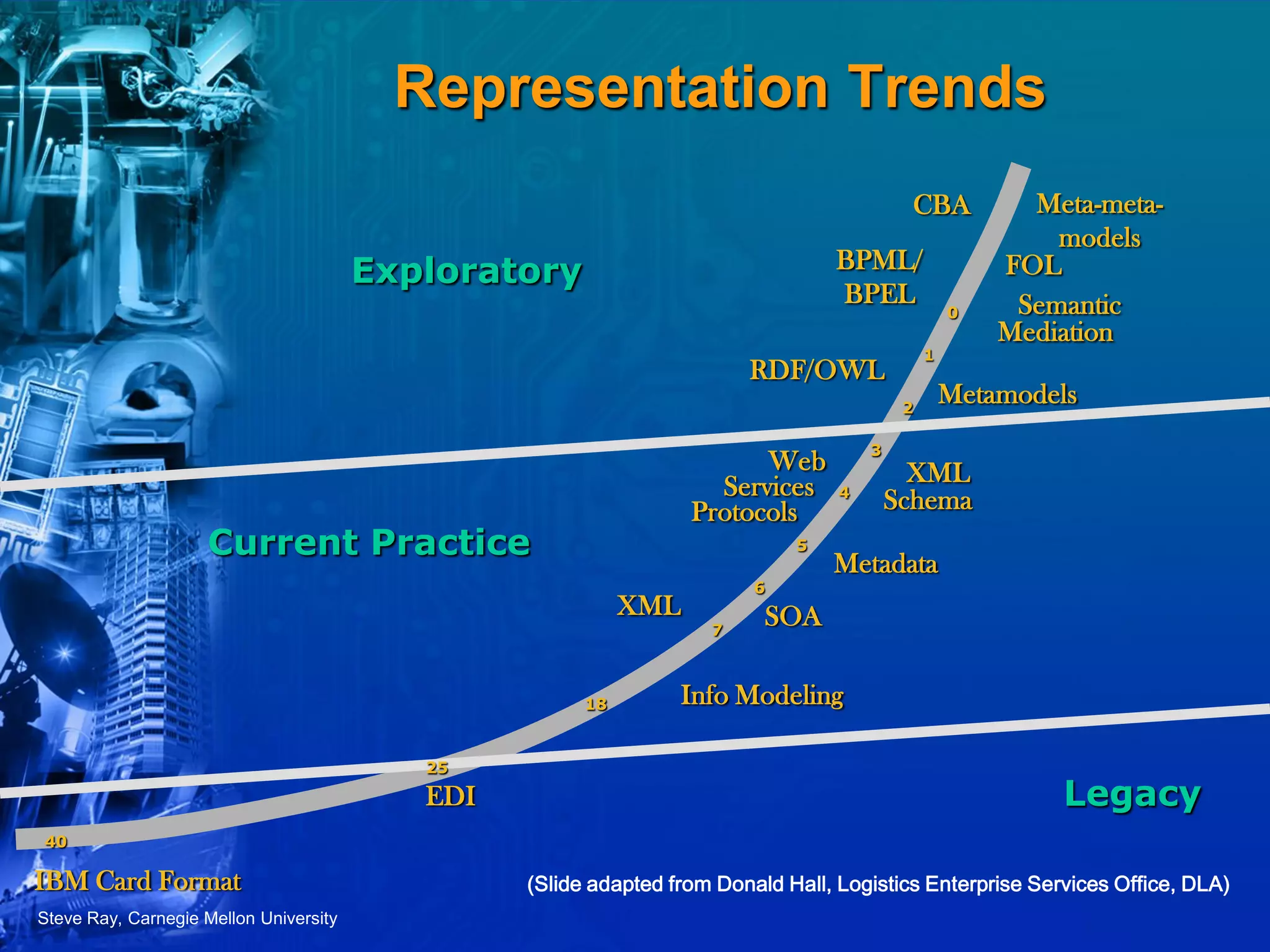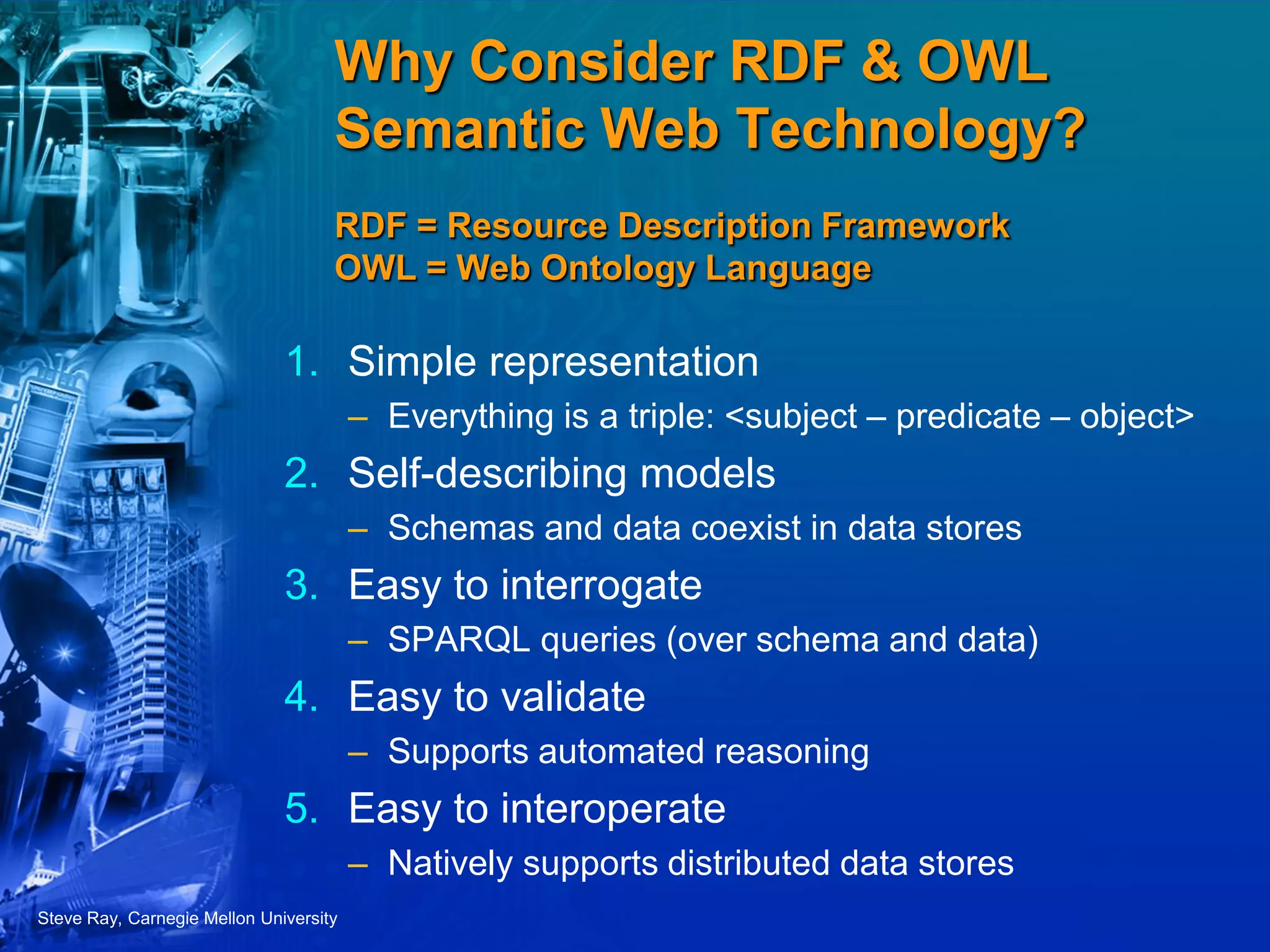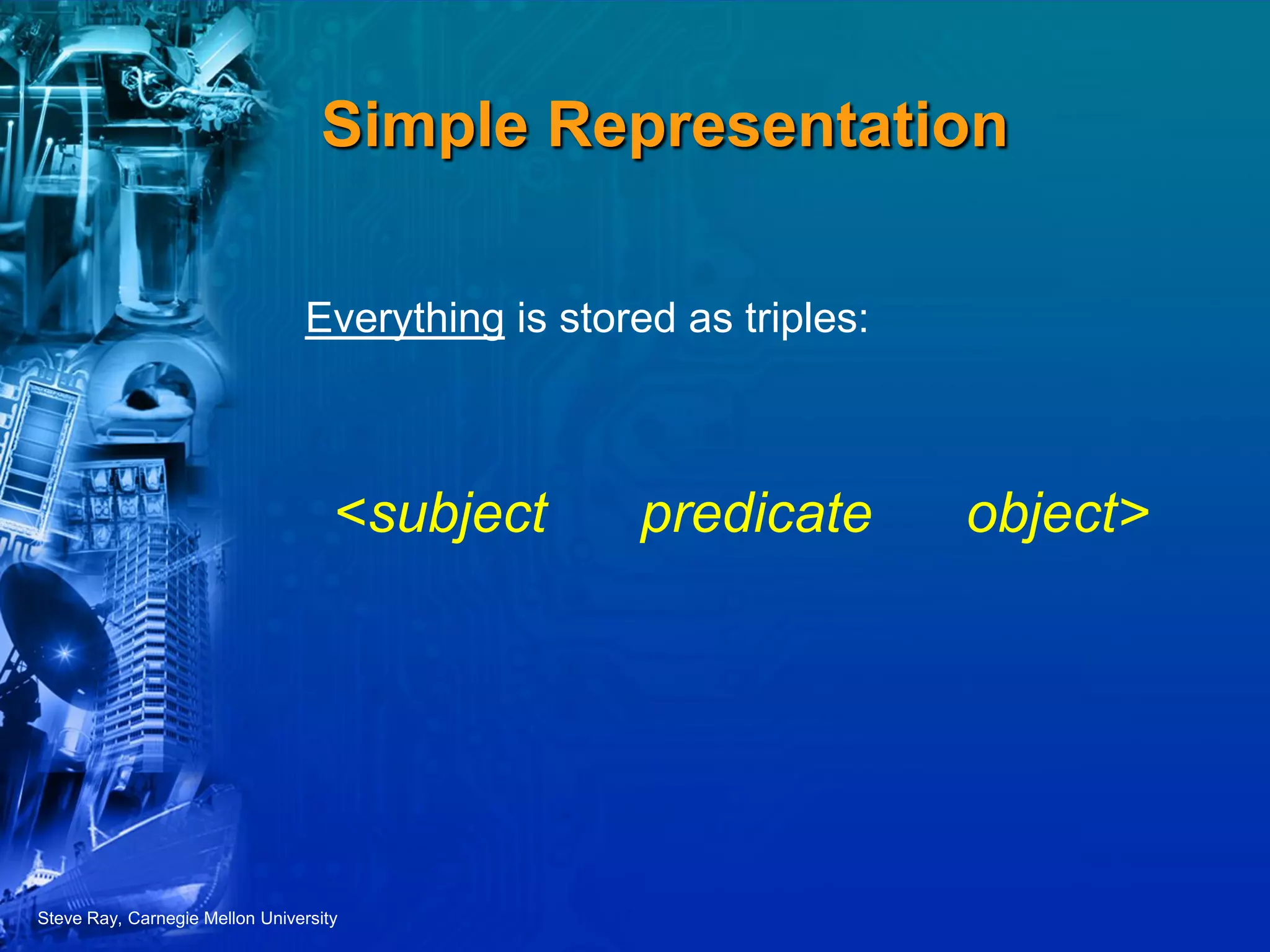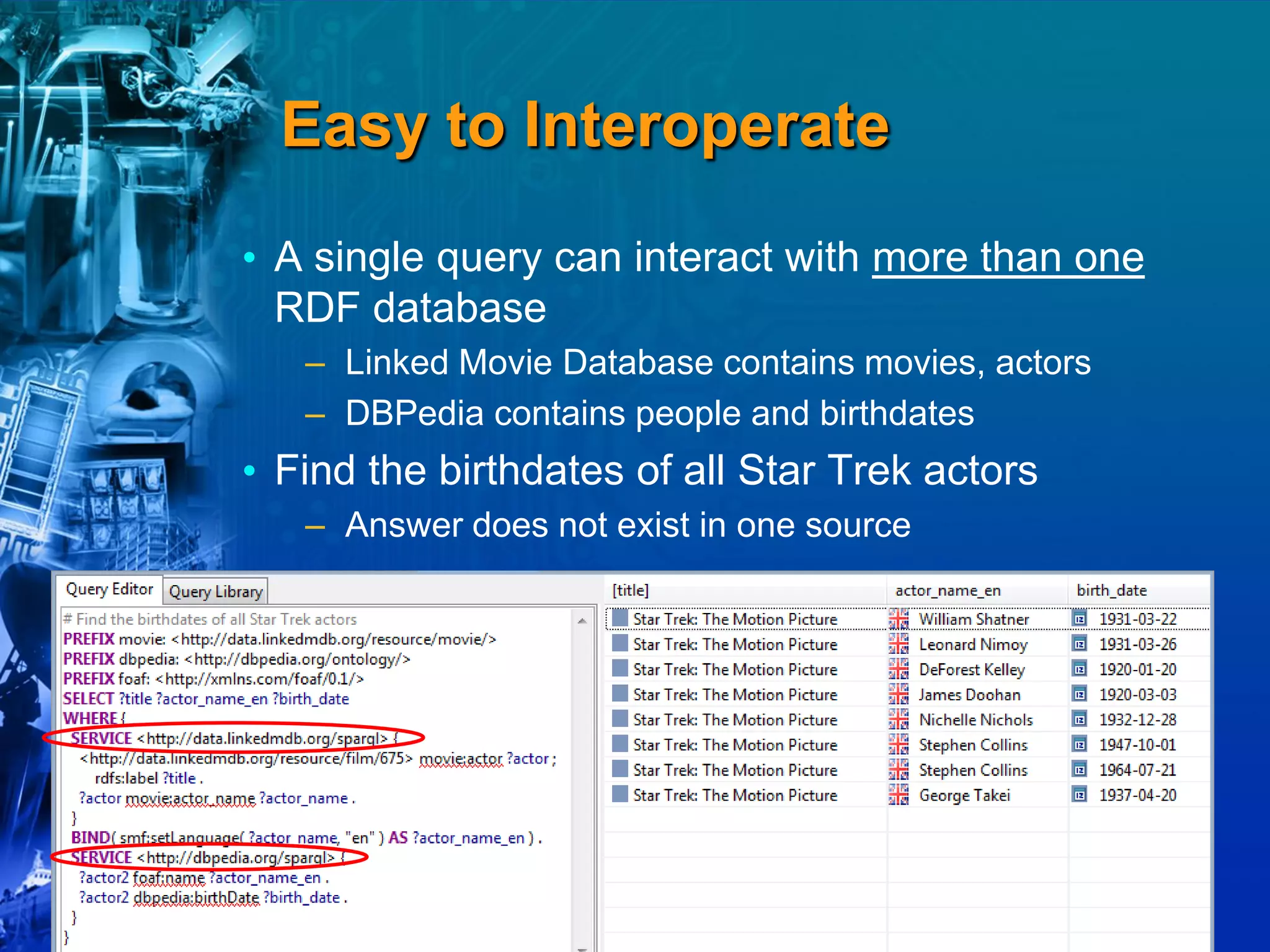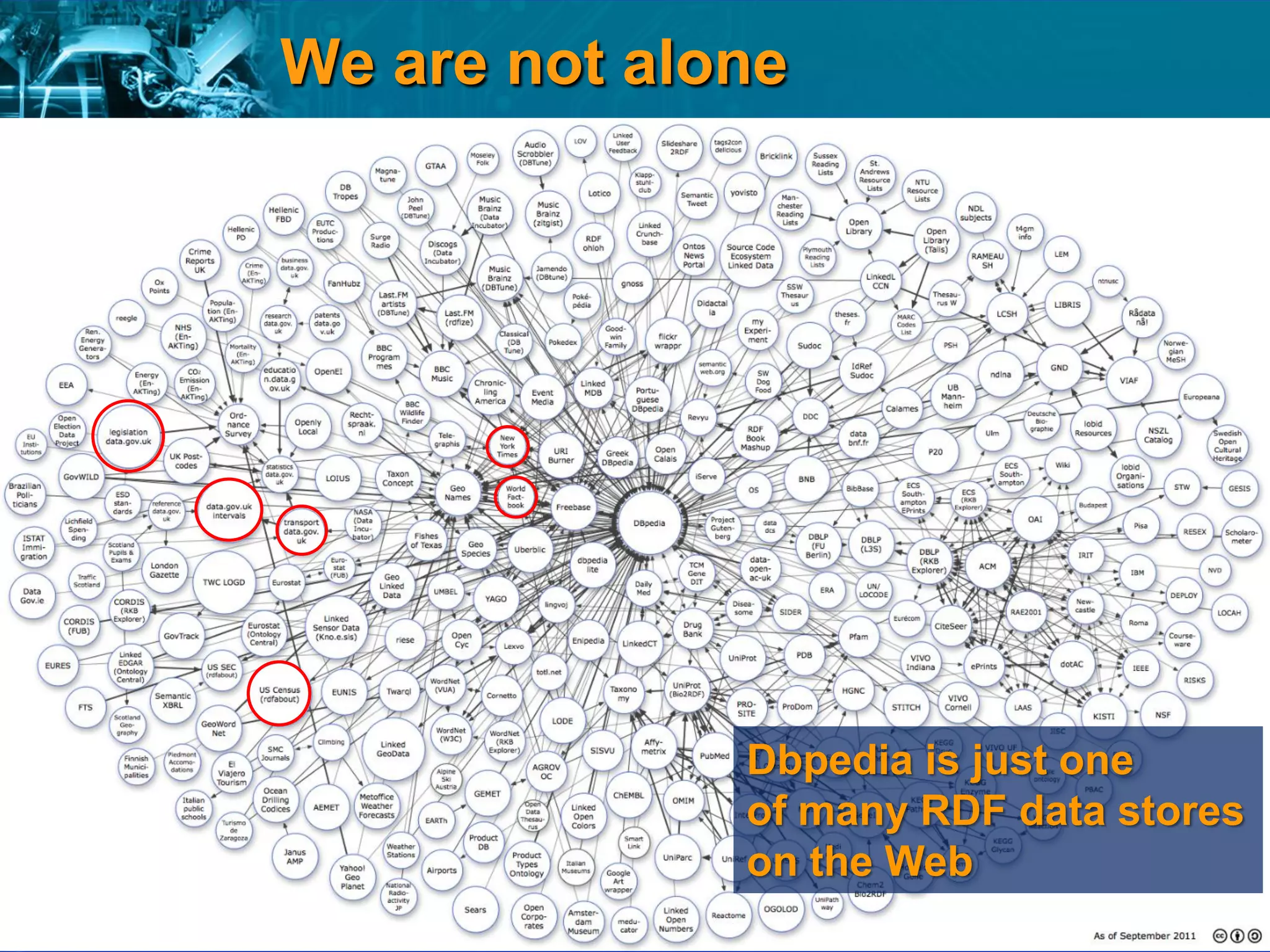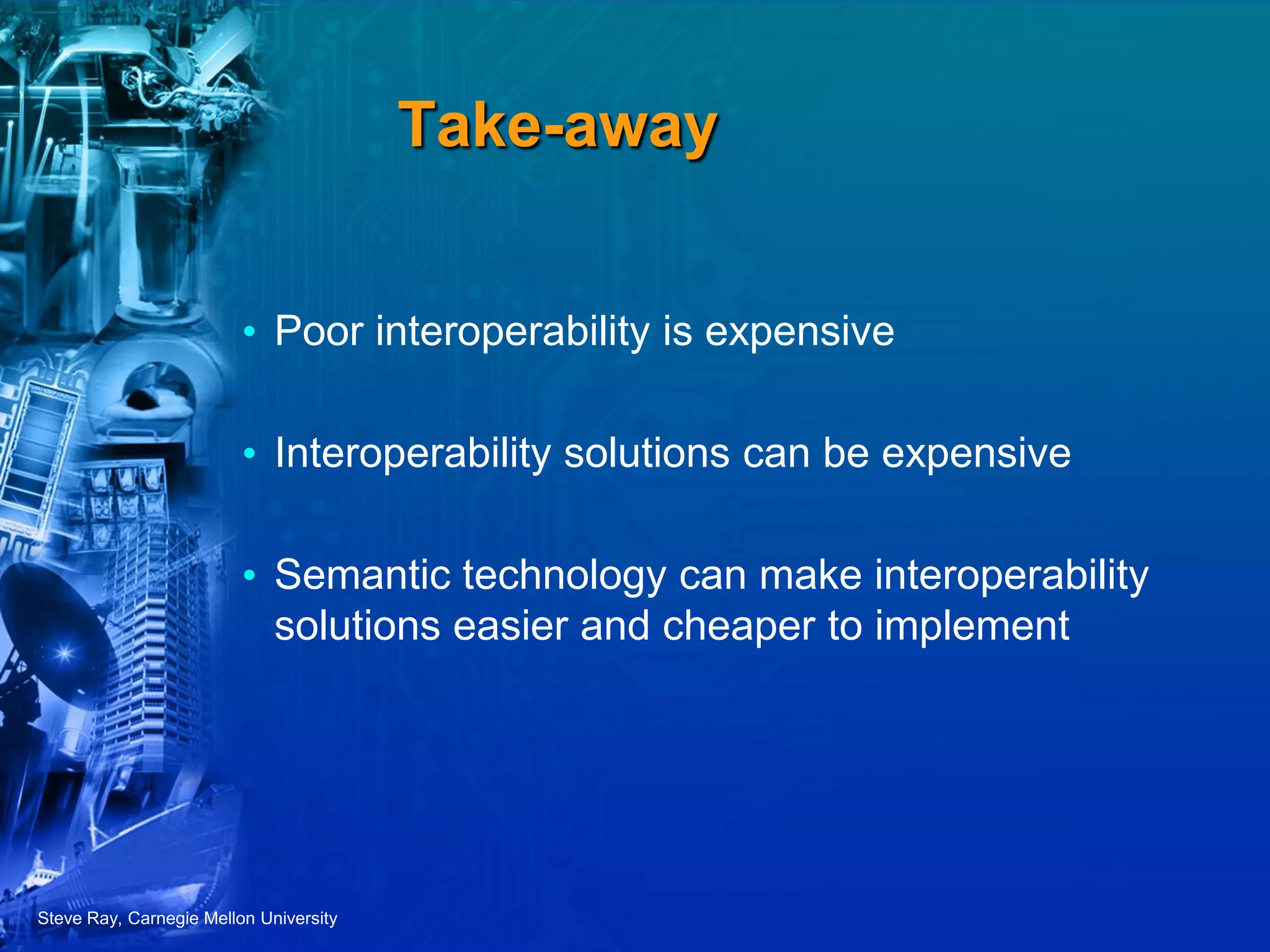The document discusses the use of semantic web technologies, particularly RDF and OWL, to enhance data interoperability across federated data stores. It outlines the advantages of these technologies, including simple representation as triples, self-describing models, ease of interrogation with SPARQL, and effective validation and interoperability. The author emphasizes that adopting semantic technology can reduce the costs associated with interoperability solutions.


